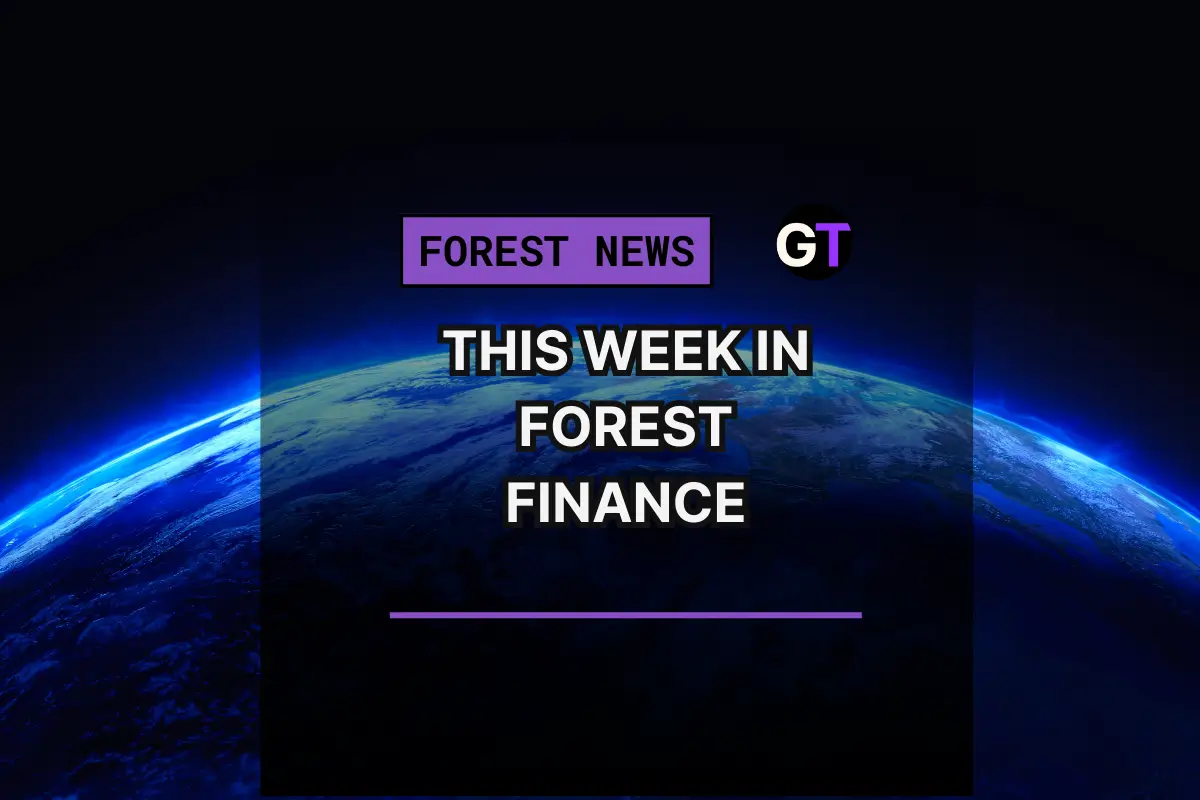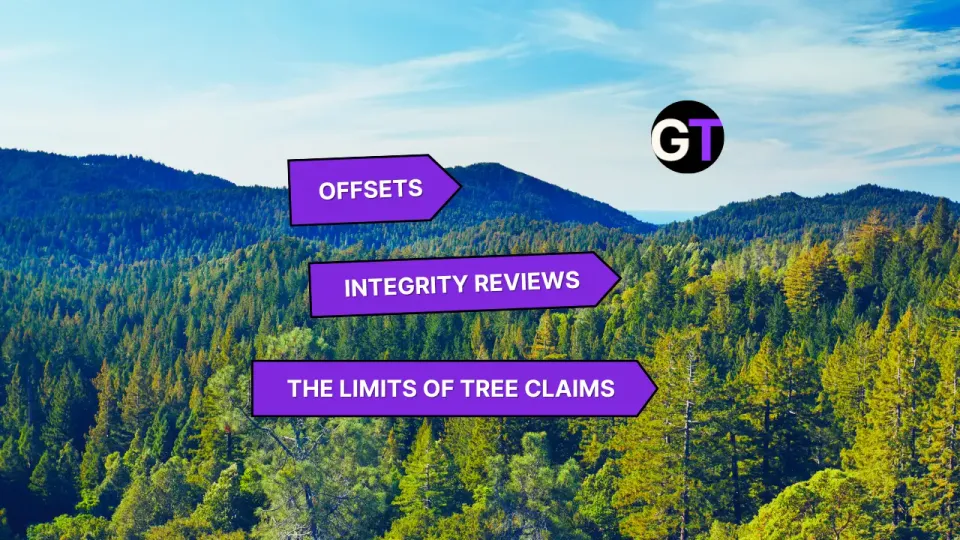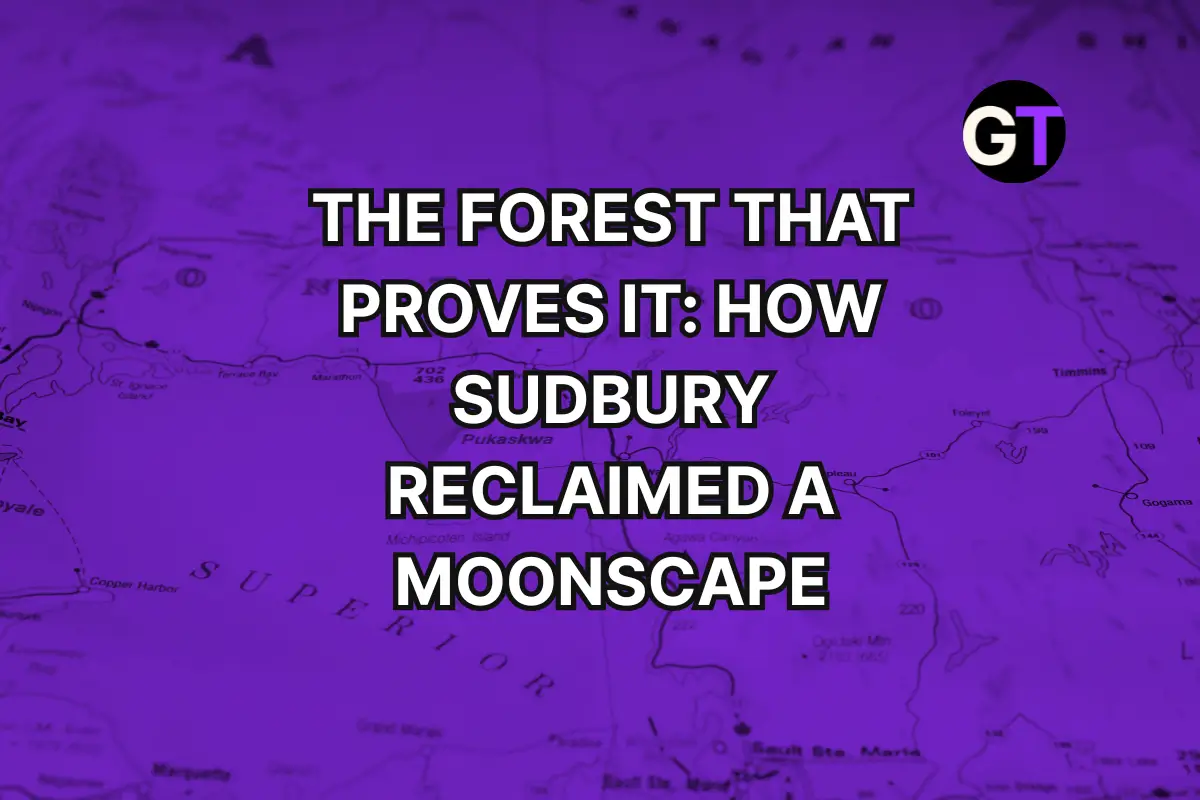This Week In Forest Finance, May 1
This week in forest finance: $30M for Mombak, $463M for Tanzania, FSC-Mirova pact, and carbon markets still lagging.

Mombak Scores $30M to Turn the Amazon Into a Climate Engine
Brazilian reforestation startup Mombak just bagged $30 million in fresh capital, with Union Square Ventures leading the Series A round—a clear signal that the carbon removal gold rush is heating up in the Amazon. The company, which restores degraded farmland using native tree species and sells carbon credits to climate-conscious corporates, is shifting gears from startup to serious scale-up. Already managing land three times the size of Manhattan, Mombak’s aiming to hit 8 million trees planted by June.
With big-name backers like Bain Capital, Kaszek, AXA, and new entrants Lowercarbon Capital and Copa Investimentos, the Amazon is fast becoming the Silicon Valley of carbon offsets. Mombak has already secured $150 million in carbon offtake contracts and expects that number to quadruple. Tech giants including Google, Microsoft, and Meta are all on board, snapping up credits in a high-stakes bet on nature-based climate fixes.
💬 Could reforesting the Amazon be the next big VC moonshot—or just Silicon Valley’s leafy conscience?
👉👉 Find out more in Reuters
New Forests Plants Roots in Laos with Timber Stake
Australian investment firm New Forests just snagged a majority share in Burapha Agro-Forestry, a key timber player in Laos, via its Tropical Asia Forest Fund 2. The move, backed by Paris-based Mirova, unlocks nearly 85,000 hectares of forestland and boosts New Forests’ ambitions to turn Laos into a regional export hub for sustainable wood—and carbon credits.
With access to land, fast-growing trees, and proximity to major plywood markets, Laos may soon be punching above its weight in the green economy.
💬 Is this just smart natural capital investing—or the blueprint for a forest-powered future in Asia?
👉👉 Read more in Impact Investor
A $250 Billion Carbon Market—Still Waiting for Buyers
Carbon removal is essential to meeting climate goals, but despite sky-high potential, the market remains stuck in neutral. Nature-based solutions like reforestation and enhanced rock weathering offer scalable, cost-effective ways to pull CO₂ from the air—but only a handful of companies are buying in. Microsoft leads the pack, while most corporates stay on the sidelines, spooked by high costs, uncertain returns, and greenwashing fears.
Without clearer rules, stronger incentives, and more trust in credits, even the most promising projects struggle to find funding.
💬 Will nature-based carbon removal ever get the market support it deserves—or is it too grounded for today’s climate tech hype? Could more openly available data tip the scales?
👉👉 Read more in The Wall Street Journal
Turning Trees Into Climate Capital: FSC and Mirova’s Green Investment Play
In a move that pairs forest stewardship with financial muscle, the Forest Stewardship Council (FSC) and sustainable investment firm Mirova are joining forces to funnel serious capital into forest-friendly projects across the globe. The goal? Tackle deforestation, biodiversity loss, and climate change—not with hand-wringing, but with high-impact investment strategies that actually put money where the mangroves are. Through their shiny new MoU, the duo aims to scale up FSC-certified forest management, reforestation, and land-use projects, with a special nod to empowering women and Indigenous Peoples.
Their collaborative weapon of choice: Mirova’s Sustainable Land Fund 2, which will channel funds into forestry initiatives in Latin America, Africa, and Southeast Asia. With nature-based solutions gaining ground in climate policy circles ahead of COP30, this partnership positions sustainable finance as a linchpin in the global green transition. Bonus points: they’re making sure the returns aren’t just ecological—but economic too.
💬 So, is this the blueprint for climate capitalism done right, or just another case of well-branded impact investing?
👉👉 Find out more at the Forest Stewardship Council
Tanzania Commits $463M to Climate Action—But Can It Fix Its Carbon Market Woes?
Tanzania is rolling out a hefty $463 million climate action plan, with most of the funding—over $400 million—sourced from COP29 pledges. The cash is earmarked for reforestation, ecosystem restoration, and climate adaptation across both the mainland and Zanzibar, with projects already underway since March 2025. Officials tout the move as a milestone for integrating carbon trading into national development, citing early wins like $16.8 million in community-level credit sales.
But beneath the surface, cracks are showing. A recent audit report revealed the country has captured just 3% of its estimated carbon credit revenue potential—thanks to lackluster coordination, limited awareness, and a tangle of regulatory gaps. Of 56 registered carbon projects, only four have been implemented. The government’s ambitious funding and project lineup may signal intent, but whether the execution matches the rhetoric remains an open question.
💬 With millions in climate funds now in play, how effectively—and transparently—will Tanzania turn green promises into lasting impact?
👉👉 Read more in Carbon Herald
Data Meets Deforestation: Global Forest Watch’s Grant Program Wants Your Next Big Idea
Got a passion for forests and a knack for turning satellite data into real-world impact? The Global Forest Watch Small Grants Fund is officially open for 2025, and it's dishing out support to civil society organizations using tech-powered forest monitoring to fight illegal deforestation and promote sustainable land use. Whether you’re running on-the-ground conservation programs or mapping canopy loss from a laptop, this fund backs those who can transform GFW data into action. Applications are open until May 9, and successful projects will get the resources—and visibility—to turn pixels into protection.
The Tech Fellowship isn’t currently accepting applications, but it’s worth keeping an eye on if you’re a solo innovator with forest-saving code in your toolkit.
💬 Think you (or your org) can bridge the gap between data and deforestation defense? What’s your strategy for putting forest-monitoring tools to work in the field—or the cloud?
👉👉 Find out more on Global Forest Watch
Syracuse Gets a $2M Slice of New York’s $15M Urban Forest Reboot
In an Arbor Day win for green thumbs and climate nerds alike, Governor Kathy Hochul has unveiled $15 million in grants through New York’s new Community Reforestation (CoRe) program—with Syracuse landing a cool $2 million to help bring forests back to life. The city’s slice of the funding pie will go toward restoring eight degraded forest sites across 38 acres, all part of a bigger push to grow the urban tree canopy by 7%. Translation: more shade, cooler streets, and a bit less smog in the Salt City’s future.
The CoRe program is the leafy backbone of Hochul’s “25 Million Trees Initiative,” which aims to plant 25 million trees by 2033 to fight climate change, boost biodiversity, and cool down overheated urban zones. Projects are popping up all across the state—from college campuses to riverbanks—supported by a mix of municipal muscle, nonprofit hustle, and student-driven “living labs.” Think of it as climate resilience, but with shovels, saplings, and spreadsheets.
💬 Can urban tree planting actually shift the needle on climate—and is your city doing enough to green its concrete jungle?
👉👉 Find out more at WSYR-TV
TreePeople Expands Post-Wildfire Reforestation with New Grant Backing
After Southern California’s January wildfires scorched through ecosystems and headlines alike, nonprofit TreePeople is branching out—literally—thanks to a grant from the Wildfire Resilience Fund, managed by the Inland Empire Community Foundation. Traditionally rooted in Los Angeles County, TreePeople is now expanding restoration work into the San Bernardino National Forest, targeting the fire scars left by the Apple and El Dorado blazes. With 120 staffers and over 3,000 acres of land under stewardship, the group continues its mission to inspire millions to take action—through tree planting, rainwater capture, school greening, and fruit tree giveaways.
This new funding aims to scale their reforestation efforts and pave the way for larger public financing. But while the group’s impact is growing, details about how grants are allocated, selected, and tracked remain vague in the public spotlight.
💬 As millions in philanthropic wildfire funds flow into the region, how transparent are these grant-making processes—and who’s keeping score on results?
👉👉 Find out more in the Grantee Spotlight

Edited by Chris Harris

This work is licensed under a
Creative Commons Attribution 4.0 International License.





